|
An amazing new picture book has just been released based on the true story of Chilean high school girls who convinced NASA to send ladybugs to space. It is co-written by Melissa Trempe, an educator with a passion for equality and a love of the outdoors, and Natalia Ojeda, a Chilean doctor whose experience in the ladybug project helped change the trajectory of her life. I fell in love with the story which follows the wishes of a sweet little ladybug who dreams of being an astronaut mirrored with the dreams of a young Chilean girl who adores science. It is a meaningful and relevant story that ALL students will enjoy, but especially our girls who yearn for their place in the future of STEM. The English and Spanish languages are expertly woven throughout the text, and the illustrations by Manuela Montoya are beautiful! Featured Picture Book:
Ladybug LAUNCH - Inspired by a True Story of Chinitas in Space (2024) By Melissa Trempe and Natalia Ojeda Illustrated by Manuela Montoya Summary (via Amazon): Natalia is a chica, an ambitious girl with dreams of becoming a scientist. Luna is a chinita, an adventurous ladybug that dreams of visiting the stars. But neither dream is easy to reach. Ladybugs are meant to munch on garden pests. And no one from Natalia’s family has ever been to college. Still, both Natalia and Luna want más. Then Natalia’s all-girl class designs an experiment. If astronauts want to live in outer space, they’ll need to grow food. Could chinitas go along to keep the pests away? The girls are eager to find out, and Luna is hungry to help. If their theory is correct, it’s a project worthy of NASA itself—and the stuff all dreams are made of. This inspiring picture book is based on the real story of Chilean high school girls who convinced NASA to send ladybugs to space! Related Themes and Standards: Science:
1. Students can research other insects and their needs, then create a book using Book Creator, Canva, or Seesaw. 2. Have students work through the Engineering Design Process and develop a presentation supporting something they believe NASA should include on a future mission. 3. Create classroom terrariums like the ones in the story and make observations over a period of time. HERE is an easy plan to follow. 4. Research and create green screen videos sharing important information about other important female astronauts like Eileen Collins. 5. Choose 10 important events in the story and summarize them on cards. Tape them to each team’s Beebot (or other robot) mat and have them program the bot to follow the correct sequence of events from the story. Do you have other ideas for this story? Please share! #BetterTogether
0 Comments
If you follow me on Twitter (X), you probably know that Melissa Stewart is one of my favorite picture book authors because her ability to convey non-fiction in simple, yet beautiful language is phenomenal! This post features her book THANK YOU, MOON: Celebrating Nature’s Nightlight which is illustrated by Jessica Lanan. As a beautiful “thank you note” is conveyed on the left-hand pages, the right side shares interesting, related facts about our moon written in kid-friendly language. The facts are fascinating because they all focus on creatures (land and sea) that depend on the moon for their survival. Featured Picture Book:
Thank You, Moon: Celebrating Nature’s Nightlight (2023) By Melissa Stewart Illustrated by Jessica Lanan Summary (via Amazon): With the soothing rhythm of a bedtime story and the scientific wonder of a nature doc, comes a celebration of the moon and all the creatures who rely on its light to find their way home. Under the glow of a shimmering moon, creatures great and small creep out of their dens, using its light to hunt, fend off predators, build their nests or build families. As the moon changes phases these animals adapt their behavior to match its waxing and waning—while human animals look on in wonder. As Earth's closest companion in space, the moon has fascinated humankind for generations, and this nonfiction picture book sheds light on the mysterious ways it affects life on Earth. With luminous illustrations by Jessica Lanan and a lyrical text that is part lullaby and part scientific resource, Thank You, Moon is a treasure for all ages to enjoy. Related Themes and Standards: Science:
SEL:
STEM Ideas: 1. Have students choose one of the creatures mentioned in the story (there are even more facts about each one in the book’s back matter) and create a virtual habitat or build one with recyclable materials. 2. Have students create a video featuring further research about one of the creatures mentioned in the story. 3. Have students write their own thank-you notes to the moon, then engineer a rover that could deliver it from its landing module. If you have access to drones, create a mission where the drones have to deliver the message to a particular place on a mock lunar surface. 4. Use Beebots or other robots to create a more engaging Moon Phases card sort activity. I used this free download and made two laminated sets for each “team”. They had to program their robot to move to the moon phase on the mat that matched the one they selected from their deck. So many grade levels study our beautiful moon! Feel free to add your favorite lunar activity in the comments! #BetterTogether For any of you whose curriculum includes teaching kids about the sun, moon, and/or what an eclipse is, make sure you add this gem by Kate Allen Fox and illustrated by Khoa Le to your STEM library! Really, everyone should add this beautiful picture book to their collection! A FEW BEAUTIFUL MINUTES Experiencing a Solar Eclipse combines sweet language and amazing illustrations to explain something that can be confusing for young children to understand—a solar eclipse. Featured Picture Book:
A Few Beautiful Minutes (2023) By Kate Allen Fox Illustrated by Khoe Le Summary (via Amazon): A poetic and exquisitely illustrated tribute to the solar eclipse and the magic of togetherness, seen through the eyes of a child. What happens during a solar eclipse? The sun vanishes. Light becomes dark. Day animals sleep, and night animals wake. The moon takes over the sky. People stop what they’re doing and together, they look up. The whole world changes for a few beautiful minutes. Celebrating a favorite wonder of the universe, A Few Beautiful Minutes encourages young readers to (safely) discover each stage of a solar eclipse, and to experience how this incredible phenomenon can connect us to one another. Related Themes and Standards: Science:
Language Arts:
SEL:
STEM Ideas: 1. Have students build their own sun viewer using the author’s directions in the back matter. 2. Have students code a simulated eclipse using Scratch or Scratch Jr. 3. Have students recreate an eclipse as a stop-motion project. 4. Build a model of a solar eclipse using various-size styrofoam balls connected to an engineered orbit system with LEGO WeDo, Spike, or other programmable robotics kit. 5. Use green screen apps like DoInk, Flip, or Canva and have students act out what happens during an eclipse. 6. HERE is a really neat lesson on measuring solar energy during an eclipse by NASA’s Jet Propulsion Laboratory! I'd love to hear about your favorite sun/moon/eclipse STEM activities! Feel free to share in the comments! #BetterTogether Whether we teach in a STEM lab, media center, or regular classroom, we all need to find effective ways to support students when failure occurs. How To Solve a Problem by Ashima Shiraishi is a wonderful picture book to use for this purpose! Featured Picture Book:
How To Solve a Problem (2020) By Ashima Shiraishi Illustrated by Yao Xiao Summary: How To Solve a Problem is the true story of Ashima Shiraishi, a world class climber who started at the age of six. Told in the first person point of view, Ashima refers to the mountain she has to climb as “a problem”. Throughout the story, illustrated with large bright colors, she shares her struggles, failures, challenges, and finally successes! She specifically shares how she learns from her mistakes to persevere and triumph. Related Themes and Standards: SEL: Perseverance Positivity Problem-Solving ELA: Metaphors and Similes Personification Science: Gravity Geology STEM Ideas: A great book to use when teaching the Engineering Design Process! 1. If you are tying this book into a Geology unit, have students build a model of Ashima’s mountain using clay, Play-Doh, or other materials. See if they can incorporate all the features she mentions in the story. You could then move on to a rock and mineral study. 2. In the story, Ashima maps out her path up the mountain. This would be a great book to incorporate into a lesson on maps, elevation, and contour lines. Have students create their own map with these elements. 3. Ashima is a free climber, but you could use this story to have students engineer a simple machine to help a beginning climber scale a mountain. Use little action figures and recyclable/dollar store items to test out their designs. 4. The last few pages of the book include many of the mountains Ashima has climbed (and at what age). To integrate math, have students research the heights of the different climbs and create a chart or graph. How else could you use this amazing picture book? Share in the comments! Non-fiction picture books can create a wonderful foundation for building hands-on STEM activities. Glaciers Are Alive by Debbie S. Miller is a perfect choice if you teach anything related to glaciers, cold-weather habitats, geological history, global warming, adaptations, or other glacier-related topics! Featured Picture Book:
Glaciers Are Alive (2023) By Debbie S. Miller (@DebbieMillerAK) Illustrated by Jon Van Zyle (Interesting info - they both live in Alaska and Jon is the official artist of the Iditarod!) Summary: Glaciers are complex features on our planet that have a life cycle of their own. They support numerous living creatures, from those that are gigantic to microscopic species. This book traces the interactions these creatures have with various parts of glaciers, introducing vocabulary in a kid-friendly way full of onomatopoeia and imagery! Related Themes and Standards: SEL: Respect for nature and animals ELA: Personification Metaphors Onomatopoeia Imagery Vocabulary Science: Glaciers Animal Adaptations Seasons Habitats Water cycle elements Geology STEM Ideas: 1. Have students recreate the effects of glacial movement on the surface geology by freezing ice cubes with sand and/or stones in the bottom. Here’s a great resource from Better Lesson with directions! 2. Have students recreate the extensive pressure involved in glaciers by carrying out this Teacher Vision lesson using marshmallows. 3. This blog post at Little Lives has neat ideas from sensory tubs for our little scientists, to creating Glacial Gak to simulate the slow movement of glaciers, to a neat activity using ice cubes and marbles to show how melting glaciers affect coastlines! 4. Have students choose one of the living creatures mentioned in the story to research and create a model of the glacial habitat. 5. Have students use information from the story to create a 3D model of a glacier using Tinkercad (print if you have time and access to a 3D printer) 6. Have students recreate parts of the story in Canva and create a 2-minute video to teach others about glaciers. 7. Drones are being used to place sensors on remote glacial surfaces to monitor climate change. Supplement the story with this article about drones and glaciers. Have students engineer model glaciers and sensors to attach to their drones. See if they can fly their drone and place the sensor at the top of their glacier. Feel free to leave your ideas in the comments! #BetterTogether! For those who love Bethany Barton’s, I’m Trying To Love Spiders, and have a favorite pollination/bee unit, this book is for you! One of my favorite STEM lessons involves the use of the picture book What If There Were No Bees by Suzanne Slade. In that lesson, after reading the book, students choose a flower image, color it, and position it in their team’s “field”. They then use our BeeBots to practice their coding skills; getting the bees to pollinate each flower. This picture book would be such a wonderful addition to this lesson, setting the stage for more of the STEM pollination activities listed below! Featured Picture Book:
Give Bees A Chance (2017) By Bethany Barton (awesomebARTon on Twitter) Illustrated by Bethany Barton Summary: The author tries to convince her bee-phobic friend how valuable bees are. Through humor, clever illustrations, and fun facts sprinkled throughout the pages, kids will learn so many interesting things about bees. Including the process bees go through from nectar to honey – who knew? Related Themes and Standards: SEL: Respecting nature Facing fears Communicating effectively Science: Animal Adaptations Pollination All kinds of bee facts STEM Ideas: 1. Use these clipart flowers to conduct the Beebot lesson mentioned above. 2. If you have access to LEGO 2.0 kits, have students conduct the plant pollination build. Or if you have LEGO Spike Essentials here’s a similar pollination build lesson. 3. This Pinterest Board by Beth Sharkey has some fun pollination STEM activities. 4. Have your kids use Scratch or ScratchJr to code a bee going on one of the missions related to the story. 5. Being a HUGE fan of SciShow Kids, I love this video which not only teaches about bees but has a great project to make a Bee House using recycled items! You could have your students build this exact one (would be a great team project) or engineer their own using other materials. You could then locate their bee houses around the school campus and have ongoing observation/data-collecting trips to see how they are doing! 6. Here is a great lesson to have your students engineer a 3D model of a beehive using toothpicks and mini marshmallows. If you have access to Tinkercad, you could take it a step further and have them practice digital modeling of a beehive! Have them screenshot their build and add it to a Padlet wall so they can see each other’s, or if you have lots of filament, print them out! 7. If you have access to a drone, create "flowers" using colored spots and have your students either free fly from the flowers back to the "hive" or kick it up a notch and have them use DroneBlocks to code an autonomous drone flying mission. To say I absolutely love the book featured in this post is an understatement! The Baddies is by the same author as Room on the Broom – Julia Donaldson. I’m sure many of you reading this have some favorite Room on the Broom engineering; it is perfect for integrating the engineering design process with our youngest STEMsters. The Baddies is just as entertaining and lends itself nicely to some engineering challenges as well! Because of its hysterical characters, embedded onomatopoeia, and fun rhyme scheme, I’m definitely ordering this one for my personal collection! Featured Picture Book:
The Baddies (2022) By Julia Donaldson Illustrated by Axel Scheffler Summary: Three “baddies,” a troll, a witch, and a ghost, are overheard bragging about their “badness” by a little mouse who challenges them to a contest to steal a little girl’s hanky. They each give it their best shot, only to be outsmarted by the little girl who ends up giving her hanky to the little mouse to keep her family warm. Related Themes and Standards: SEL: Kindness Humor ELA: Rhyming words Onomatopoeia Character traits Science: Friction (if you do the hovercraft activity mentioned below) STEM Ideas: 1. Engineer a way to get a hanky from one spot to another without touching it. (You can get cheap handkerchiefs at most dollar stores, or you can order a dozen HERE) 2. If you have access to drones, have students engineer an attachment to transport the girl's hanky to a safe location. 3. Since one of the characters was a ghost, have students design and engineer a hovercraft that would carry a hanky from one spot to another. Science Buddies has a nice lesson HERE or this one HERE uses paper plates instead. Better yet, show your kids this video, provide lots of different materials and let THEM figure it out through the engineering design process! 4. The bridge in the story didn’t hold the troll very well. Have students engineer a bridge and test it to see what the maximum weight the troll could be. 5. The kids will laugh at the little girl’s toffee flying out of her pocket and getting stuck on the witch’s nose. Create a simple cardboard witch and have students engineer catapults or other inventions to launch “toffee” at the witch’s nose. (You could add velcro or two-sided tape to the witch’s nose and the kids could launch cotton balls or small pompoms to represent the toffee.) 6. In the end, the little girl gives her hanky to the mouse family for a blanket. Have students brainstorm other uses for a hanky and create a promotional video demonstrating the new use using Canva, Flip, or another video creation platform. Have you used this book to integrate STEM? I'd love to hear about it! #BetterTogether Since retiring, I've been spending a lot more time working to improve my craft as a picture book writer. This includes connecting with a lot of the children's writing community online. Having been in education my entire life, this new world of traditional publishing: querying agents, learning from editors, lurking as new online connections converse about the overwhelming process, has been very interesting! Last night when I saw others tweeting (yes, I will always call it that!) about Susanna Leonard Hill's 2023 Holiday Writing Contest, I knew I had to give it a shot (my first writing contest ever)! The theme this year is Holiday Countdown so the piece had to include counting something down. The hardest part was reducing my first draft to the 250 word limit, especially while trying to keep the rhyme and meter as tight as possible. Some of that smoothness was sacrificed, but lesson learned! Those of you who know me, know I am passionate about integrating relevant STEM at the elementary level! So you KNOW I had to include a drone in my entry! As I wrote Devoted Drone Deliveries, I thought back to missions our GLIDE girls had done over the years and how it is so important for girls to see themselves represented in drone education and the drone industry. I knew the main character had to be one of the most caring and amazing young drone pilots I'd had the pleasure to teach, Jordan. As a side note, the importance of growing this representation and elementary drone integration is exactly why I am so honored to be part of the curriculum team at Drone Legends! They share that passion! So anyway! Here is my debut writing contest entry! Enjoy!
Devoted Drone Deliveries Jordan loves the people who live in her neighborhood! Holidays are here again and so to do some good… She wants to use her trusty drone to give each house a gift, that way she’ll stay anonymous and spirits she will lift! House number 10, Mr. Frost works down at the deli. To him, she gives some homemade bread and jar of apple jelly. Number 9, Mrs. Green, a mom with seven kids, her gift is cookies, sweetly baked in tins with matching lids. Number 8, on down the street, John and Jerry Knox, they work out in the cold all day their gifts, knitted socks. Number 7 is the place the Lopez family lives. They always wave and shout hello, a smiley flag she gives. Number 6, Grandpa Frank, although he’s not related, he’s loved by everyone around his gift, art she created. Number 5, with fading paint belongs to Captain Smoots, he works hard daily catching fish; her drone delivers boots. Number 4, Mrs. Nell who has a bunch of cats, Jordan gives her treats and toys that look like little rats! Number 3 belongs to Ann who sleeps during the day, she works the night shift at the mill, for her, a big bouquet. Number 2, a tiny home owned by Officer Mark, a flashlight is his gift this year to help him in the dark. Number 1, the final stop is Jordan’s own home place. She views the pictures from the drone, smiles on EVERY face! This blog post contains Amazon Affiliate Links. As an Amazon Associate I earn from qualifying purchases. One of my favorite Citizen Science activities with kids involves ants, so this picture book really appealed to me! Although you may need to take another look at this one in the spring, I wanted to share it now. It would also make a great hook for a study on where insects go in the winter! Featured Picture Book:
Hey, Little Ant (1998) By Phillip and Hannah Hoose (@PhillipHoose) Illustrated by Debbie Tilley Summary A boy and an ant have a discussion about whether the boy should step on the ant. They compare aspects of their lives that are similar and different. The final decision is left up to the reader! Related Themes: SEL: Taking the perspective of others Caring about others Peer pressure Similarities and differences Science: Insect studies STEM Ideas: 1. There is a great lesson on Mystery Science that you could tie in after reading this book called Where do bugs go in winter? 2. Here are my lesson slides that incorporate the Mystery Science video and an engineering challenge with Hex Bugs! 3. Engineer a safe trap to bring with you on a picnic so no ants get harmed. Use recyclable materials during the design process! 4. Plan out, write a script, and record a video convincing the boy to save the ant. 5. Create a green screen project (either video or just still photos) where the kids are small like ants. DoInk is my favorite app for these types of projects, but you could use whatever green screen app you like! 6. Bring live ants/ant farm into your classroom for student observations! Here is a great site with ideas and support. Or take your kids out into nature to do some ant observations - make sure you bring the hand lenses and science notebooks! Do you have other ideas? I'd love to hear about them in the comments! #BetterTogether |
Kim CollazoSTEM Advocate and Picture Book Author Archives
April 2024
Categories
All
|

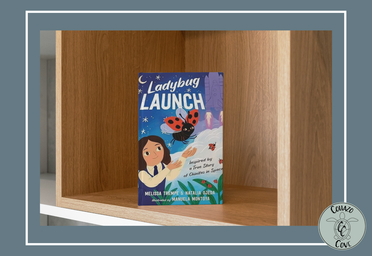
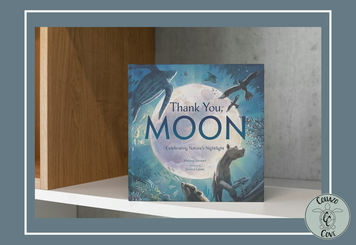
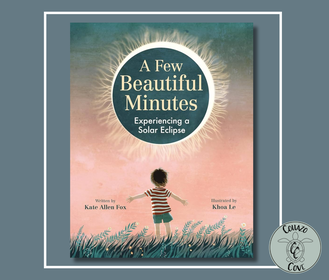
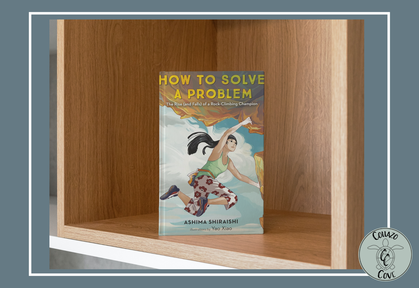
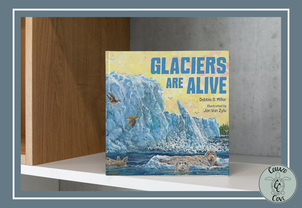
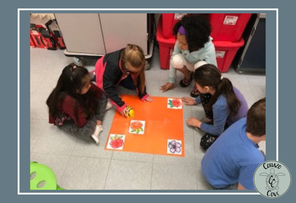
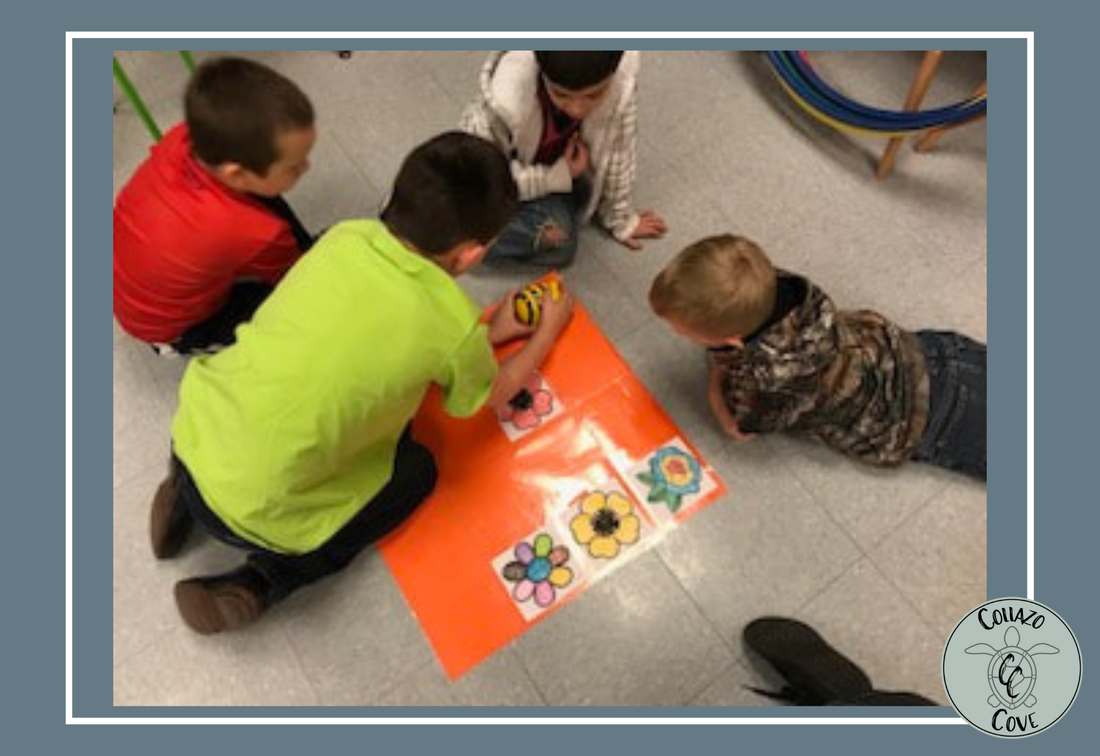
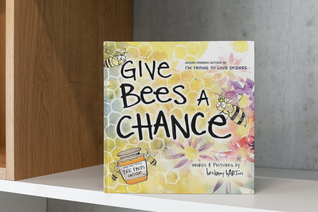
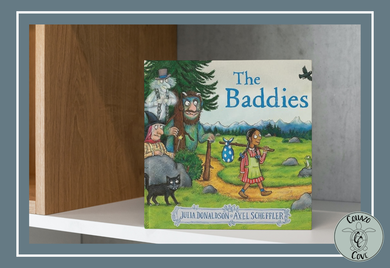
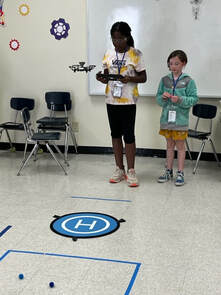
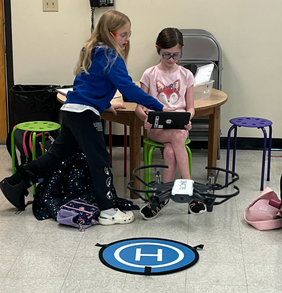
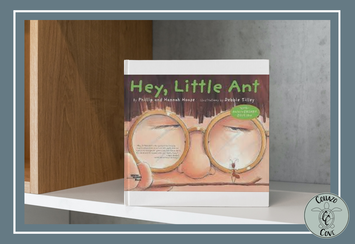
 RSS Feed
RSS Feed